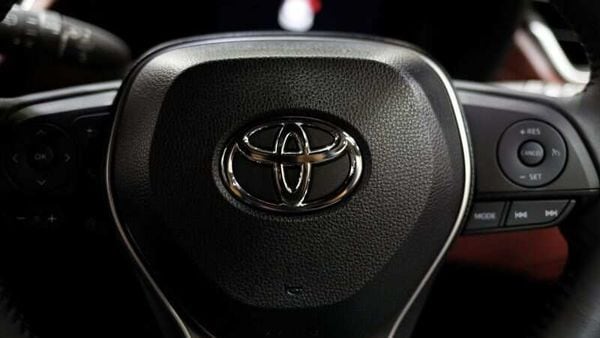Toyota broke its just-in-time rule just in time for the chip shortage


In contrast to the rest of the auto industry, Japan’s Toyota Motor Corp. said on Feb. 10it wasn’t expecting a shortfall of semiconductors to affect its production. In the company’s earnings call, Chief Financial Officer Kenta Kon said that as part of its business continuity plans, Toyota — which makes more than 10 million cars a year —had secured “four to six months of stocks as necessary" for various components. As its operating profits surged, it raised its earnings forecast by over 50%. (Meanwhile, the company said the Feb. 13 earthquake off the coast of Japan did not have any impact on itsplants.)
Meanwhile, therest of the industry is gripped by a chip deficit. Globally, automobile production could fall by up to 3 million cars, or 3% to 5% of the total, this year. Itis the resultof a miscalculation of demand and deep, systemic issues in the supply chain; and the scarcity isn’t abating anytime soon.
Also check these Vehicles
Toyota’s month-longstockpile stands in contrast to its renowned productionphilosophy. In the 1960s and 70s, the Japanese heavyweight invented the art of just-in-time manufacturing —a strategy rooted in keeping a low stock of goods and raw materials, or inventories, on hand to cut costs and boost margins, while streamlining production. “Waste can manifest as excess inventory," the company declares on its websiteas it explainsthe roots of the Toyota Production System.
Also Read : EU weighs deal with TSMC, Samsung for semiconductor foundry
When it was implemented, the process was seen as a radical shift towardefficiency. Companies around the world took to it. American companies that adopted just-in-time manufacturing saw a 70% inventory reduction along with lower labor costs and requirements for space, one study found.Lean inventories madecompanies more agile, especially when sales softened or the broader economy slowed.Shareholders liked that, too.
In fact, in 2017, Toyota further sharpened theprocess. In a trial run at a subsidiary’s plant in Iwate, Japan, the company was able to cut suppliers’ inventory space for some parts by 90%. It effectively eliminated the need to hold extra stock, doing away with some cumbersome processes at Toyota factories.


Ironically, despite its adherence to such tight manufacturing, Toyota’s inventory levels have continued to tick up over the last decade and through the global financial crisis and natural disasters in Japan and Thailand, where the company has a big presence. Its average quarterly inventory levels over the last five years have been one of the highest in the sector. The time it takes to turnthestock into sales has also gotten longer, making for efficiency losses.
Also Read : Chip shortages force more cuts at North American auto plants
Toyota has closely monitored this stockpile —especiallythrough tough times. In the years after the global financial crisis, when automakers were slashinginventories sharply,Toyota did some soul-searching and created a system called “Rescue" that took a look deep into its tiers of suppliers. As part of this, it built a database that stores supply chain information for around 6,800 parts, giving the companya lensinto where the shortages and challenges were.
This tight grip on on its range of diversified suppliers helped with the current chip shortage. As Kon said during the latest earnings call, “every day, every week, every month" Toyota communicates with thousands of suppliers at all levels of the chain, giving them production volume plans frequently. An automakerneeds all the parts to make a car — and, if the company is right, relationships helped itgetthe math right on what matters.
Looking to Toyota today, car companiesmay discern anotherlesson for the future: Lean suppliesmay help efficiencies under normal situations but they aren’tenoughto weatherastorm.
This column does not necessarily reflect the opinion of the editorial board or Bloomberg LP and its owners.
Anjani Trivedi is a Bloomberg Opinion columnist covering industrial companies in Asia. She previously worked for the Wall Street Journal.








 2487 cc
2487 cc Petrol
Petrol
 72.8 kWh
72.8 kWh 405 Km
405 Km












